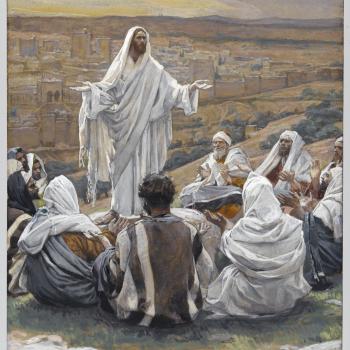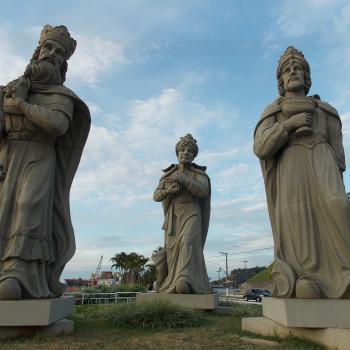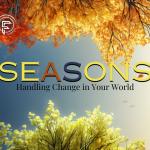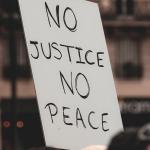Imagine running a large organization—a multinational organization—with thousands of employees, complicated networks of incomes and expenses, vast assets requiring ongoing upkeep and capital improvements, and a clientele that consists of nearly every single person in every country within your organization’s sphere. And imagine doing this without internet, fax, smartphone, or computer; without any travel conveniences whatsoever, unless you think a horse is handy. Throw in a handful of malevolent state officials who work hard at hobbling your power, draining your finances, and co-opting your authority.
This begins to describe the realities of the Church in the 14th century.
There are other, nastier, realities: rogue priests; maniacal preachers who prophesied the end of the world…any minute; waves of anti-semitism resulting in mass murders; and crazy behaviors like the “dance madness,” a frenzied movement of men and women who danced for days and nights on end in some search for spiritual release.
And the power plays. They’re exhausting today, and they were exhausting then. Sometimes the antagonism between a pope and a king reached a complete impasse. King beats chest and demands sovereignty; pope thunders from papal throne about sacred authority. Here is how one pope expressed the church’s understanding of the relationship of power (1198):
Just as the founder of the universe established two great lights in the firmament of heaven, the greater light to rule the day, and the lesser light to rule the night, so too He set two great dignities in the firmament of the universal church…, the greater one to rule the day, that is, souls, and the lesser to rule the night, that is, bodies. These dignities are the papal authority and the royal power. Now just as the moon derives its light from the sun and is indeed lower than it in quantity and quality, in position and in power, so too the royal power derives the splendor of its dignity from the pontifical authority….
Let’s just say that this wasn’t universally agreed upon. Clash of swords; clash of words. Obstruction of tithes and papal taxes; secular intrigue and military threats. Sometimes matters triggered such a peak of papal pique that a pope would declare an interdict—a complete suspension of all sacramental ministry in an area until the king repented.
Medieval kings, however, did not like to repent. (I’m quite sure that modern heads of state wholeheartedly embrace it.) King John of England so angered Pope Innocent III that the entire country of England was placed under interdict for five years. Those who lived within the territory of Louis of Bavaria suffered a papal interdict for twenty-plus years: twenty years without the sacraments that were necessary for salvation; twenty years without baptism, Eucharist, marriage rites, final anointing. Imagine the distress and fear; imagine the pastoral anxiety it caused when a priest could not care for his people who were desperate for the gifts of God.
And yet, in those wild days, some found ways to survive, and more than survive. Some single women in various northern towns established small communities of mutual support. They weren’t nuns and they took no ecclesial vows, but they shared homes, pooled their money, and cared for one another. They were called Beguines (bay-geen). Is it necessary to say how much the Church establishment distrusted this proto-feminist movement? Probably not. Some found the ecclesial hostility to extend as far as dry wood and matches.
[Curiously enough, earlier this year I saw a news report on a growing trend among single women whose income is insufficient to sustain a home of their own. Either they’re newly divorced or widowed, wanting community and friendship, and shunning the isolationism of apartments; they’ve begun buying homes in groups of three or four, living together in co-housing arrangements. If you throw in the Beguines’ spiritual rhythms of prayer and service, you might recognize them as “descendants” of these 14th-century women.]
Besides the Beguines, there were any number of other lay-inspired solutions to the Church crises: the Waldensians, the Brothers and Sisters of the Free Spirit, the Cathari, the White Brothers, the Beghards, and others—some more orthodox than others. When the systems that create the scaffolding for human societies to flourish begin to crumble, opportunities for redefining and restructuring reality multiply like Tribbles. (Sorry, couldn’t resist.)
So, then, these Friends of God. Who were they? Why were they any different from the other assorted choices? How might their “survival techniques” empower us to persist in faith?
Evelyn Underhill, in her masterful study Mysticism, describes these Friends as “a great informal society bound to the heroic attempt to bring life in the terribly corrupt and disordered life of the fourteenth century back into relation with spiritual reality and so initiate their neighbors into the atmosphere of God.”
Today, in the late summer of 2014, we are crushed by the “disordered life” all around. Where can we turn our eyes and not see suffering and chaos? Can we even try not to see the dead children of Gaza? the rabid anti-Semitism alive and well in Europe? the beheaded children in Iraq? the burning churches of Egypt? the stoned women in Lebanon? the fragmented bodies in Ukraine? the Ebola victims in west Africa? the snatched girls of Ethiopia? the lost and lonely children at our borders? I can barely breathe thinking of it all sometimes.
Would that we could bring life and “the atmosphere of God” into our world.
Photo courtesy Ynot-Na, Flickr C.C.


















